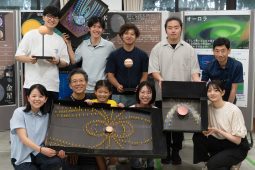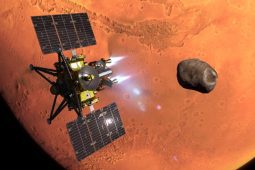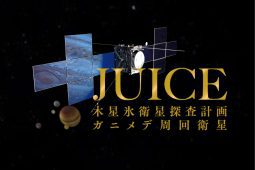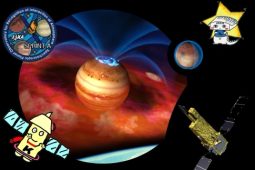PPARCセミナー(2024/04/22)

PPARCセミナー(2024/04/22)
(1)
[Name]
Hajime Ohata
[Title]
Development of mid-IR heterodyne spectrometer with hollow fibers and the hollow fiber coupler for the observation of planetary atmospheres
[Abstract]
Mid-infrared (IR) laser heterodyne spectroscopy can achieve an ultra-high wavelength resolution of λ/dλ>1,000,000 (frequency resolution <30 MHz) in the mid-IR wavelength of 10 μm (frequency of 30 THz). This enables to detect wind velocities in the planetary atmosphere directly with a resolution of several 10 m/s. The ultra-high resolution also has the capability to highly sensitive detections of trace gas and isotope ratios in the atmosphere. Notable successes on Venus, Mars, Titan, Jupiter, and Earth have been accomplished by ground-based telescopes with heterodyne spectrometers (e.g., Takami et al., 2020; Livengood et al., 2019; Kostiuk et al., 2001; Fast et al., 2002). However, these spectrometers require many optical elements to combine two optical paths, so their size and weight are large and their stability is not good. Because of this, the space-borne heterodyne spectrometer has never been achieved. Fiber optics enables significant improvement to simplify, downsize, and reduce the weight of the instrument, leading to a breakthrough in space-borne applications. In the NIR region, the heterodyne system with fiber couplers has been proposed as a space-borne instrument (Rodin et al., 2015). On the other hand, in the mid-IR region, there has been no fiber coupler capable of achieving high transmission. In this study, we focus on the development of a new Mid-IR laser heterodyne spectrometer using the hollow fiber coupler. It has a potential to be a space-borne system of the heterodyne spectrometer for future. We have reported the feasibility studies of our new laser heterodyne spectrometer in the mid-IR region using fibers and a fiber coupler. (1) For the hollow fiber, transmission efficiencies of >85%/m were achieved for both CO2 gas laser and quantum cascade laser (QCL) as coherent light source. Meanwhile, transmission efficiency of 89.6%/m was achieved for sunlight as incoherent natural light source. (2) Heterodyne spectroscopy of lights from a black body and CO2 laser through fibers mixed by a beam splitter can achieve the similar sensitivity as that without fibers.
Now we try to observe a spectrum of a light from the Sun with a terrestrial absorption of CO2. This time we reported current statues of experiments.
(2)
[Name]
Yoji Kuwayama
[Title]
IPRT/AMTERASの高性能化に向けた広帯域フィードシステムの開発 III
[Abstract]
PPARCで運用する飯舘惑星電波望遠鏡IPRTの広帯域での高感度化に向けた、フィードシステムの開発について進捗を報告する。
現行のIPRTの受信系は325MHz( & 650MHz:開発中) 中心の狭帯域高感度観測用に加えて、100-500MHz 帯を ターゲットとした広帯域太陽電波スペクトル観測システムを独立して備えているが、後者では開口効率が 20% 以上の実用的な帯域幅は 200MHz に届かない。今後の一層の展開が期待される低周波VLBIの観測推進や、太陽電波バーストの出現特性把握に向けて、高感度観測用と広帯域観測用フィードを統合した広帯域で高効率な新たなフィードシステムの開発に着手した。
これまで、SKA-MID band-1 用フィードとしても検討報告がある自己補対形の 4アーム sinuous アンテナをモデルケースとして、電磁界解析ソフト FEKO を用いて設計検討を行ってきた。今後はスケールモデルの製作に基づく特性評価と実用化への課題の洗い出しを行っていく予定であり、2024年7月に最初の特性試験実施を目標としている。
本セミナーでは、開発のねらいとなる太陽電波の研究レビューに重点を置いて発表する。





